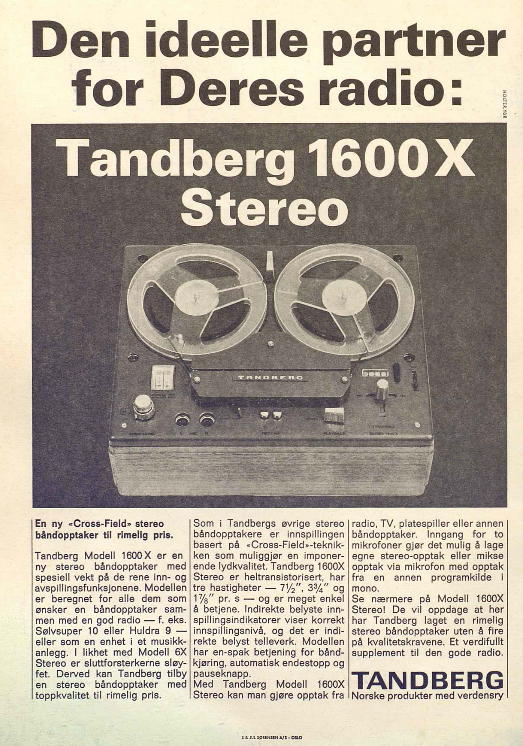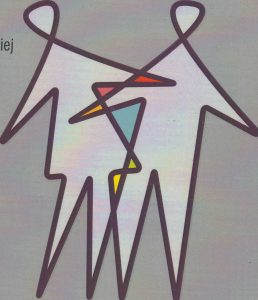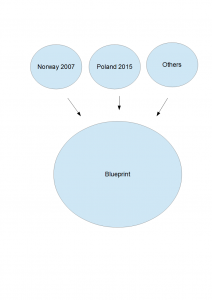
Break on through to the other side
A more mature – and in a way, more genuinely frightening – version of this Doors song can be heard here (Rhino records RL 523104):

Don’t you know when a head’s dead, Cream asks in this recording, in the song “What a bringdown”, on their Goodbye album, 1969, an amazing bit of forecast on later events.
The song tells of the many marry pranks of the sixties prankster, and yet, their whole purpose was dying down. The head had been killed. The song describes the artistic reason why the world’s first supergroup (after the Beatles) closed shop.
“Moby Dick and Albert making out with Captain Bligh
So you know what you know in your head”.
Yet all these trips and head maneuovers won’t make out – unless there is some reality change too.
When the head is dead, there is no more to be said. What a bringdown!
So, goodbye, Cream.
“The head” in this lyric was slang for the counterculture, including the hippies, at the time.
Note that this song was written before the Kent University student murders, the murders of the Black Panthers, and other events. It became “sadly true”, even more than anticipated.
On their Goodbye LP, Cream was also before their time, reflecting on the influence of women, e g in the song Badge (with some of Clapton’s best guitar work ever);
“Thinkin’ ’bout the times you drove in my car.
Thinkin’ that I might have drove you too far.
And I’m thinkin’ ’bout the love that you laid on my table.”

I have always been interested in tape recorders. In fact this was where I started my life as an audiophile, 16 years old, investing in a Radionette Multirecorder in 1968.
This was a smart, youthful, portable device for its time – see more advertisments here.
It came with a microphone, so I used it for interviews, for taping from radio, and not least, taping vinyl.
This last purpose soon evolved to become a main use, so I invested in a Tandberg stationary tape recorder, in fact two models, the first described here;
I nding up with a Revox A77 in the early 1970s. I am not sure how the Radionette passed out of my life, wish I still had it. A very clever piece of engineering, although Radionette and Tandberg were later merged, the poppy Radionette development department was closed down. Some years later, the merged Tandberg went bankrupt. The company had sadly been overwhelmed by cheaper transistor products from the east, according to the official story.
I used the Revox as a major music source for many years, but got convinced that data was the way to regarding music, or that this should be tried out, so I started using DAT recorders in the 1990s. I invested in a Sony handheld DAT player, and used three of their models, including the Sony DAT Walkman TCD-D100.
 I bought at stationary DAT recorder, Sony DAT DTC-ZE700.
I bought at stationary DAT recorder, Sony DAT DTC-ZE700.
However DAT recorders are limited to the CD level of digital sound – or close to it. I soon got tired of that.
In the 2000s, I have used a Korg MR-1, and – very portable – a Cowon D2. Of course they don’t sound as good as the Revox A77. But that is like carrying a large heavy suitcase (15 kg), while the D2 is like a matchbox and the Korg like a deck of cards. Leaving all complaints aside, this development is amazing, over fifty years. That the Korg at all competes with the Revox in some respects, and yet is less than 2 percent of the weight (200 grams), is amazing.
Still – however interesting reproductions may be, they are reproductions. For music the rule is true that the less recordings and the less overlay of other recordings, the better. Less is more. Over the last years the source itself has become more important for me. Yet tape recorders in all forms retain their use. A hard disk or music server can be a taping system, although someone else has done the critical transition from analog to digital. As a “prosumer” I would like to do most of that transition myself, or have more choice.
I am sure digital will one day sound as good as analog, but we are not there yet. Not by far, in my estimate. This goes even for SACD sound, the best I’ve heard so far (DSD). One reason is that analog corresponds with the molecular level of vinyl. Whatever happens to the diamond in the track, this is so “retro” that we just have a mechanical arm doing the data reading, and this, in fact, is more sensitive than current bit-based interpretations of music. So in analog you get music, in digital – well, it is OK for a while, but when can we switch back, please. Of course, this comes with the challenge of using a physical/mechanical very vulnerable and finnicky system that must be setup right to sound its best, like getting a telescope into focus.

I 2007 ledet jeg en undersøkelsesundersøkelse kalt “Likestilling og livskvalitet” i Norge (med Helge Svare og Cathrine Egeland).
Det var en “state of the art” type detaljundersøkelse av kjønn i / likhet. Nasjonalt i Norge ble det brukt i politiske dokumenter som hvitboken om menn (Mannsmeldingen) og av likestillingskommisjonen (Skjeie-utvalget). Internasjonalt spredte det seg mye mer enn vanlig, spesielt i (delvis norskfinansierte) BILDE-undersøkelsen rundt om i verden: https://promundoglobal.org/programs/international-men-and-gender-equality-survey-images/#
Basert på denne ganske uvanlige internasjonale oppkjøringen for en norsk forskningsmodell, hadde jeg håpet at i 2017, ti år etter den opprinnelige undersøkelsen, ville Norge finansiere en oppfølging, men at det ikke skjedde, til tross for litt lobbyvirksomhet fra min side (ikke vanlig for meg, men jeg trodde at dette var av nasjonal betydning). Det ble til og med ført opp i parlamentet / Stortinget, men fikk ikke finansiering, så jeg trengte å bruke billig lån med lav rente for å få hjelp til virksomheten min.
Norges forskningsråd var med på å få en mer begrenset utvikling til virkelighet. Et Polen-Norge-prosjekt ble finansiert under EØS-bevilgninger, med samme tittel som det originale norske prosjektet i 2007.
Nå er hovedresultatene fra den nye studien publisert på polsk, samt en første mer teoretisk oversikt, på engelsk.
Polen-Norge-versjonen av studien prøvde å gå utover IMAGE-versjonen, som var noe “anvendt” og fokusert på menn og vold. Den siktet mot rom norgesiden) var å og forbedre den grunnleggende “strukturelle / kulturelle” norske designen – en mer dyptgående tilnærming til likestilling. Oppgaven var å utvikle en modell for kjønn i / likestilling som fungerte bra også i Polen. Forskerteamene samarbeidet for å lage et mer helhetlig likestillingsmålingsinstrument enn tidligere har vært tilgjengelig i Europa. Det ble foretatt en representativ undersøkelse i Polen 2015, samt intervjustudier.
Her er den første boken fra prosjektet, på engelsk:
The second book (2018), with results, in Polish;
Basert på forskningserfaring og sammenligning mellom Polen og Norge, samarbeidet de to teamene også for å lage en “blåkopi” -versjon for en forbedret undersøkelse – på engelsk – som går utover Polen / Norge-rammen, som kan brukes i videre forskningsutvikling, for eksempel for en kartlegging av Europa som helhet.
Blueprint-forslaget finner du her:
The idea is to go one step further – for more research;

This paper examines new data on how gender equality affects interpersonal violence. Link to paper here.

My 1997 dr. philos. thesis “Gender, Patriarchy and Capitalism – A Social Forms Analysis” has now been transferred from my old web page.
Due to size, it is published in two parts.
Part one includes my research areas and the main analysis of today’s gender system, along with a first version of social forms analysis. Part two contains extensions of this first version, going into patriarchy theory, historical evidence, economic evidence, and others.
Some errors remain. Please note, some figures etc. have not been copied, text is sometimes incorrectly formatted, etc. Also, note the Errata list at the end of part 2.

The excellent researcher, social economist Isaac Illitch Rubin died in Siberia, after many years of persecution from the Stalinist regime, in 1937. He died 48 years old. Why did that happen?
Cf http://en.wikipedia.org/wiki/Isaak_Illich_Rubin

Why did he die? Why was he persecuted?
Rubin were among those who thought one should read Marx, before making a judgement. One should not just be acquainted only with summaries of what Marx was supposed to be saying, like “matter is more important than ideas”. His ideas should be judged scientifically, not just politically.
As official Marxism developed in the Soviet Union and elsewhere, during the 1920s and 30ies, it became more authoritarian. The usefulness of Marx’s texts became more important than their scientific truth.
Rubin was one of several researchers questioning this attitude. The official Marxism was aligning with the norms of a masculine upper class of industrial social development. The rules of the game were changing. Research debate within Marxism was followed by persecution.
The “masculinistic worker” saw the light of day – in the Sthakanovite worker movement of Stalinism.
Socialist art emphasized masculine musculature. It was a long time since Lenin, debating with Kollontay, had considered sexual reforms in Russia.
Rubin was first arrested in 1930. What followed was a nightmare of persecution.
The air was cold on the Siberian steppes. Isaac may have died, after seven years of persecution including torture, in 1937, just as he drew in the cold air.
Recommended reading:
Rubin, Isaac Ilyich 1972: Essays on Marx’ Theory of Value. Black and Red Press, Detroit
Rubin, Isaac Ilyich 1978: Abstract Labour and Value in Marx’s System. Capital and Class 5, 107-139
Rubin, Isaac Ilyich 1979: A History of Economic Thought (Orig. 1929) Inks Links, London
See further: Socialist “Herrschaft” – Sosialismens herredømme
More on Stalinist misogyny:
Montefiore, Simon Sebag, 2004: Stalin – the Court of the Red Tsar. Phoenix, Orion Book Ltd. London
Documents the misogyny and contempt of weakness of the Soviet leadership headed by Stalin.
On how Stalinist repercussi0n hit men – persecution never before seen on the left, see further on Weissman, The Course is Set on Hope.

At the night of February 5, I went outside to take some shots of the very special snowfall over the last hours (using a small compact camera). Since the temperature was around zero Celsius, the snow had clung to everything like a kind of glaze. These pictures are taken from my home, first looking towards the street in front, street lights behind the glazed trees, a pedestrian passing at right.
I stand at the top of a snow-glazed veranda staircase.
The snow clings to nearby objects too, like this pine, although with rising temperature the last couple of hours, it has melted a bit, showing only the main part of the the first amazing detail pattern.
The hedge towards our neighbours is glazed.
This night, the temperature is rising, wind blows, and the air remains humid. Misty dots or low level clouds drive through Oslo, with effects like this.
And this.
This is not a fire, in the background – just trees in front of city lights in the snowy night.
Photos (c) Øystein Gullvåg Holter 2013
Camera: Nikon Coolpix s2550

The quote is from Erving Goffman’s pathbreaking book Stigma (1963). Goffman, along with Robert Merton and some others, belong to my top shelf of American sociologists. Goffman deserves to be read “with” the text, not too critically “against”. Of course he was not a grand theorist, e g a social class theorist – that was not his mission.
More on Goffman:
See research blog note (in Norwegian) here.
Also, search in my dr. philos. thesis, here.
Other texts where Goffman is discussed (to come)

Is gender equality an important contributor to other social development?
Is gender equality associated with more well-being? Less violence?
I have created a data base with 116 units – 31 European countries, 35 other countries (a representative global sample) and 50 US states. The base includes several gender equality indexes including the Gender gap index, income level (GDP per capita) and income inequality numbers (Gini index), as well as several potential “effect” variables like violent death, suicide, well-being and fertility.
Here is a preliminary result.
This first analysis is focused on Europe and USA, where the data are best. The possible “effect” areas like violence and health are selected based on what data exist.
A preliminary result is shown below. A thicker arrow means a stronger correlation.
All connections are positive, except the US fertility connection (at the bottom), which is negative.
These connections are partly “known” in the sense that some of them have been argued and documented in limited samples. Yet these country and state level statistics are new.
The results indicate that gender equality has a stronger general positive effect on social development than so far acknowledged. The results show that on the country/state level, in Europe and the US, gender equality is associated with lower violence (violent death), with more gender-balanced suicide, with greater well-being, and – in Europe- with higher fertility. Gender equality is strongly positively associated with fertility in Europe, but mildly to moderately negatively associated in the US.
Men’s share of unpaid domestic work, only measured for Europe so far, is very strongly correlated with different gender equality measures, and is therefore seen as part of the cause variable, in this figure.
Most of these associations seem to persist also when exposed to some basic control variables, like income level (GDP per capita) )and income equality (Gini index).
If these results are right, gender equality is a more active agent of welfare and health development, than it is credited for. It is an important underlying factor reducing violence and increasing well-being and health.
A more comprehensive report is on its way. Remember, you saw it first here!












![DSCN0617[1]](http://ogholter.no/wp-content/uploads/2013/02/DSCN06171-1024x768.jpg)
![DSCN0618[1]](http://ogholter.no/wp-content/uploads/2013/02/DSCN06181-1024x768.jpg)
![DSCN0619[1]](http://ogholter.no/wp-content/uploads/2013/02/DSCN06191-1024x768.jpg)
![DSCN0620[1]](http://ogholter.no/wp-content/uploads/2013/02/DSCN06201-1024x768.jpg)
![DSCN0621[1]](http://ogholter.no/wp-content/uploads/2013/02/DSCN06211-1024x768.jpg)
![DSCN0622[1]](http://ogholter.no/wp-content/uploads/2013/02/DSCN06221-1024x768.jpg)

